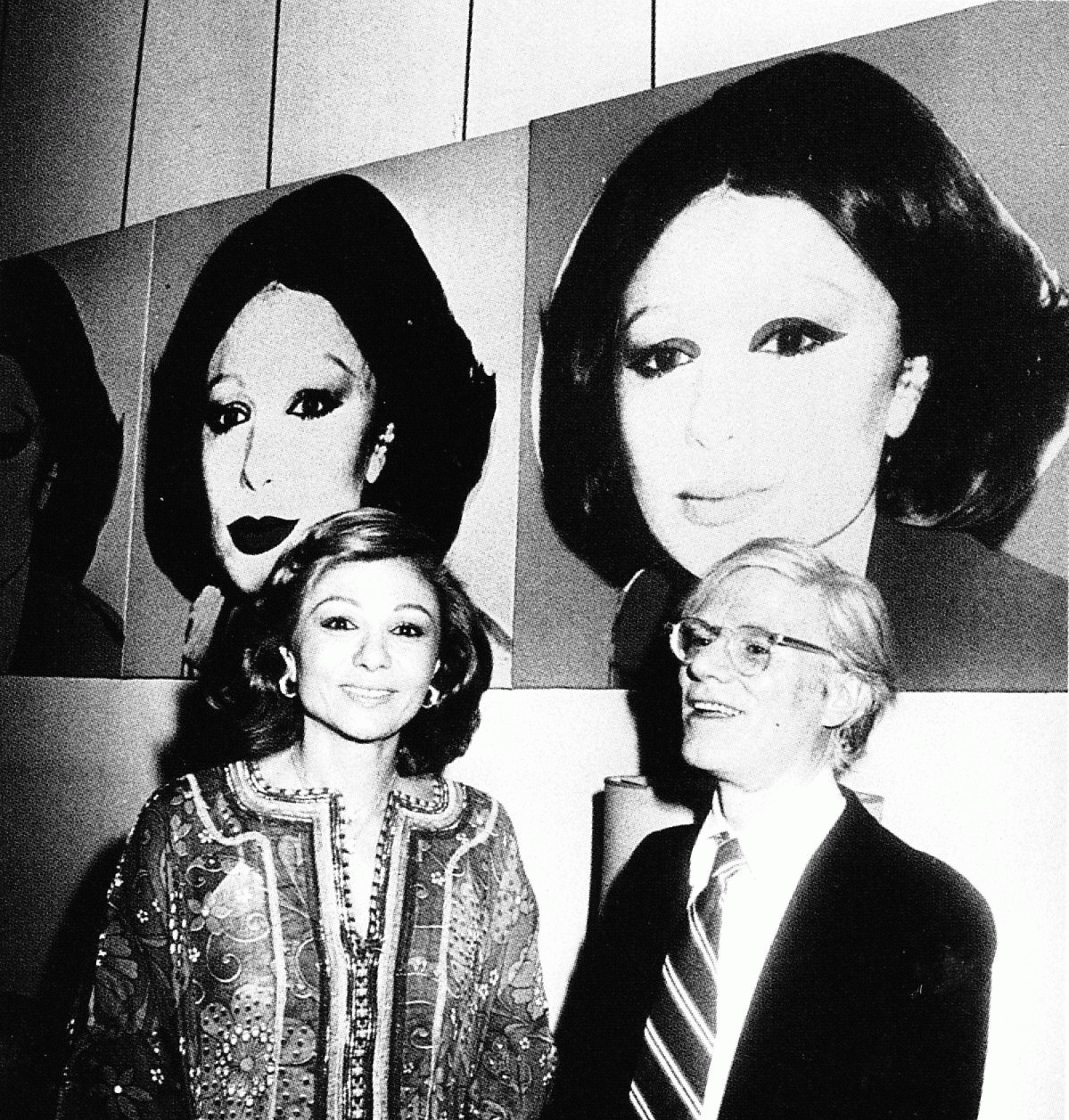4A Lab Seminar
Keivan Moussavi Aghdam: Iranian Modern Identity and the Visual Arts in the Pahlavi Era

Farah Pahlavi and Andy Warhol at the Tehran Museum of Contemporary Art, 1977.
After the constitutional revolution of 1906, many Iranian intellectuals and institutions attempted to construct a modern Iranian identity by combining traditional values and globalized modern principles. The Pahlavi Monarchy (1925–1979) accelerated these efforts through antiquarianism on the one hand, and projects of rapid modernization on the other. The visual arts, influenced as they were by the national movements of the Pahlavi period, was one of the main fields that testified to this new trend. In this talk, Moussavi Aghdam attempts to show the ways in which a modern Iranian identity was made manifest in the visual arts of the Pahlavi era. Focus of the presentation is the period between the 1930s and the 1970s, a time in which Western architects, art historians, and archeologists, along with Iranian cultural authorities, played a major role in the shaping of a new national identity in Iran.
Since the 1930s, the Society for the National Heritage had made efforts to build monuments that incorporated the findings of Western archeologists on ancient Iranian architecture—a tendency that could be seen not only in architectural forms, but also in other objects of everyday life such as stamps and banknotes. Another institution, the Special Bureau of Queen Farah Pahlavi, played a pivotal role in the introduction and circulation of the national modern idiom by funding several institutes and events related to the visual arts. The Saqqakhaneh School, established in the 1960s, was the most famous artistic movement adhering to the new artistic idiom, which was characterized by the merging of traditional Iranian motifs and contemporary visual inspiration. In parallel, the influential independent institute Talar-e Iran attempted to cast the formation of the new national art onto the background of a social theory of the arts. In contrast, a few left-wing artists questioned the idea of national art altogether, aiming instead to join international socialism and create a labor-oriented art.
Keivan Moussavi Aghdam is a researcher in the fields of Modern Art History, Philosophy of Art, Photography, and Contemporary Iranian Art. Since 2019, he is a PhD Candidate in Visual History at the Humboldt University in Berlin; his doctoral research, funded by a grant of the Max Planck Society, focuses on the role of Western archaeologists in shaping the discourse on Iranian identity during the Pahlavi period (1925–1979), and the impact of this discourse on Iranian visual arts and culture. Moussavi Aghdam received both his Master’s degree in Art Theories and his Bachelor in Photography from Azad University, Tehran. Between 2015 and 2019, he taught courses on philosophy and the history of art and photography at Zanjan University and Tehran University of Art, as well as some private institutes in Tehran. He has also written and translated several articles for Iranian art magazines.
31. Januar 2022, 16:00 Uhr
The event takes place online.
Please register to this seminar session at: 4a_lab@khi.fi.it
Hinweis
Diese Veranstaltung wird durch Fotografien und/oder Videoaufnahmen dokumentiert. Falls es nicht Ihre Zustimmung findet, dass das Kunsthistorische Institut in Florenz Aufnahmen, auf denen Sie erkennbar abgebildet sein könnten, für die Veranstaltungsdokumentation und Öffentlichkeitsarbeit (z.B. Social Media) verwendet, bitten wir um eine entsprechende Rückmeldung.


